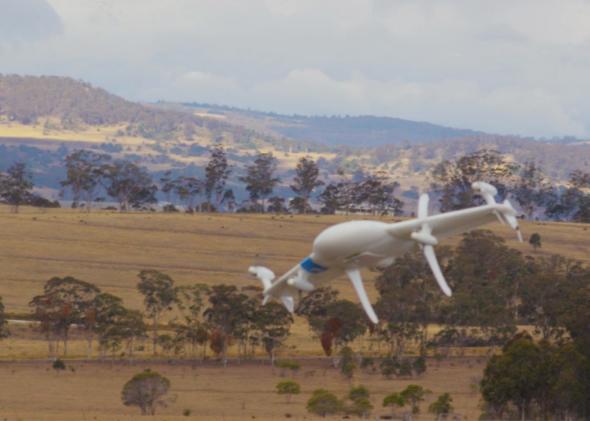Google has been privately working for two years to build self-flying vehicles, the company revealed Thursday evening. Or, to use a less crazy-sounding name: drones.
Called “project wing,” the self-flying vehicles program is the latest project from Google X, the secretive skunkworks responsible for the company’s self-driving cars, wi-fi balloons, and Google Glass, among other things. There have been rumors that Google might have something like this in mind since around the time that Amazon announced its own plan for delivery drones last fall. But this is the first confirmation from the company, and it’s even more ambitious than a lot of us suspected.
“Self-flying vehicles could open up entirely new approaches to moving things around—including options that are faster, cheaper, less wasteful, and more environmentally sensitive than the way we do things today,” spokesman Raymond Gobberg said in an emailed statement. After two years of tinkering, he added, the company has hired a new team lead—drone pioneer David Vos—“to take us from research to product.”
Earlier this month, the team took its research prototypes to Queensland, Australia, for their first test flights, delivering candy bars, dog treats, cattle vaccines, water, radios, and other items to a pair of Australian farmers. (Australia’s government has fewer restrictions than the United States on unmanned commercial aircraft.) Here’s a video of what they look like so far:
Google’s project is reminiscent of Amazon’s stated ambition to build delivery drones that could deliver small products (up to five pounds) to customers within half an hour of their orders. But it could also be more than that. Google X’s press release mentioned future applications ranging from larger cargo routes to emergency-relief deliveries to the ability for people to rent certain items—like, say, a power drill—for only the few minutes that they need them before sending them on their way to the next user.
It’s hard to say at this point which company is further ahead, as both are probably at least a few years away from putting their plans into commercial operation. There remain hurdles both technological and regulatory, along with some obvious safety concerns.
That said, there do seem to be a few differences in the basic design approach even at this early stage. Whereas Amazon has talked of using “octocopters,” which hover via an array of spinning blades, Google’s prototypes are a little more plane-like, with a set of wings designed for “fast forward flight” in addition to rotors for vertical takeoffs and landings.
Below is another image of the prototype drone making a delivery, which come with the caveat that this is “more of a research vehicle than an indication of a final decision or direction,” according to Google X spokesman Ray Gobberg. “As we figure out exactly what our service will deliver and where and why, we will look at a variety of vehicle options (both home-made and off-the-shelf).”

Image courtesy of Google X
And here’s Amazon’s official delivery-drone video, for comparison’s sake:
For more on Google’s delivery drones, read this in-depth story by The Atlantic’s Alexis Madrigal, who was offered an early look at the drones by Google officials. Madrigal concludes that Google’s drones may be about more than just quickly delivering small products. In the long run, Google may be aiming to help shape the future of transportation, both on the ground and in the sky. Madrigal writes: “Taken with the company’s other robotics investments, Google’s corporate posture has become even more ambitious. Google doesn’t just want to organize all the world’s information. Google wants to organize all the world.”
That might sound like a sensational claim, but based on my experience covering Google over the last few years, I don’t think it is. I’ve written previously about Google’s forays into the physical world, including humanoid robots, smart appliances, and high-flying surveillance drones and satellites.
Previously in Slate:
